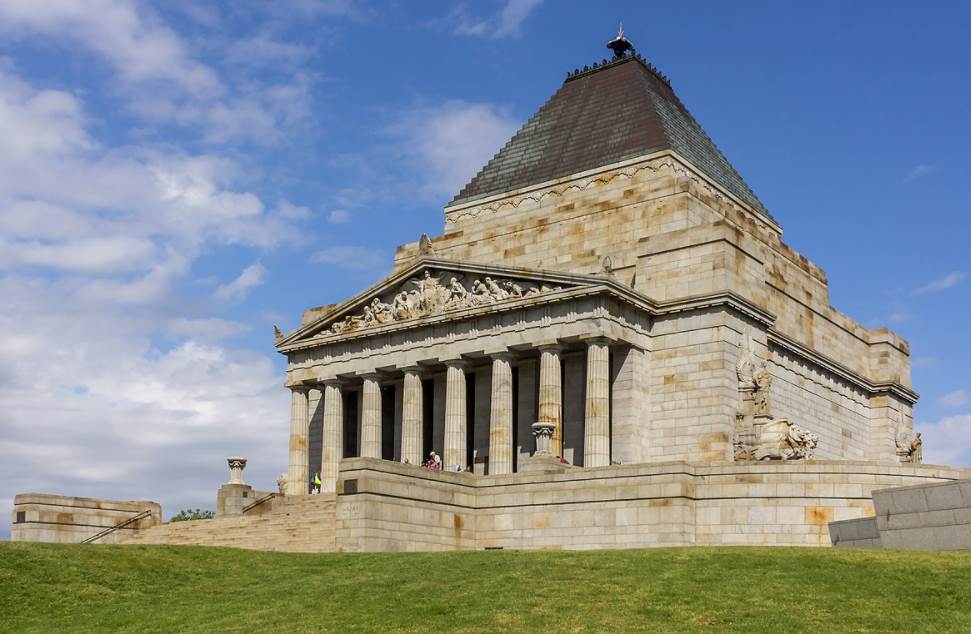Australia is a huge country in Oceania and covers a total area of 7,692,024 square kilometers (2,969,907 square miles). This makes it the 6th-largest country in the world.
Regardless, it only has a population of nearly 26 million inhabitants, making it one of the least-populated countries in the world.
The Australian continent is the flattest and oldest inhabited continent in the world. It’s estimated that indigenous people have lived as early as 65,000 years ago, which is quite astonishing.
Today, the country is a mix of diverse natural landscapes which range from vast deserts to tropical rainforests. It’s also home to some of the most sprawling cities globally, which feature some of the most iconic buildings on the planet.
In this article, you’ll discover some of the most famous buildings in Australia, attractions you absolutely must put on your bucket list while you’re in the country.
1. Sydney Opera House
If there’s one landmark in the world that defines a city then it’s most certainly the magnificent Sydney Opera House, one of the most famous opera houses in the world.
Apart from being the venue of over 1,500 performances every year, the building is also one of the most popular tourist attractions in Australia with an estimated 8 million yearly visitors.
The building features enormous concrete “shells” which give it its distinctive appearance.
The structure was built for 14 years between 1959 and 1973 and has since become one of the ultimate symbols of not only Sydney but all of Australia.
There are options to either visit the building on special tours or attend a performance of the Opera Australia, the Sydney Theatre Company, the Sydney Symphony Orchestra, or others!
Official website: Sydney Opera House

2. Council House Perth
The Council House in Perth is far from being the tallest building in Australia, but it’s one of the most remarkable ones. It’s located next to Government House, the official residence of the Governor of Western Australia.
It was constructed between 1961 and 1963 and officially opened by Queen Elizabeth II shortly after Perth hosted the 1962 British Empire and Commonwealth Games.
It’s one of the most amazing examples of modernist buildings in Australia. Although some have criticized its design, it looks stunning at night after 22,000 LED lights were installed in 2010.
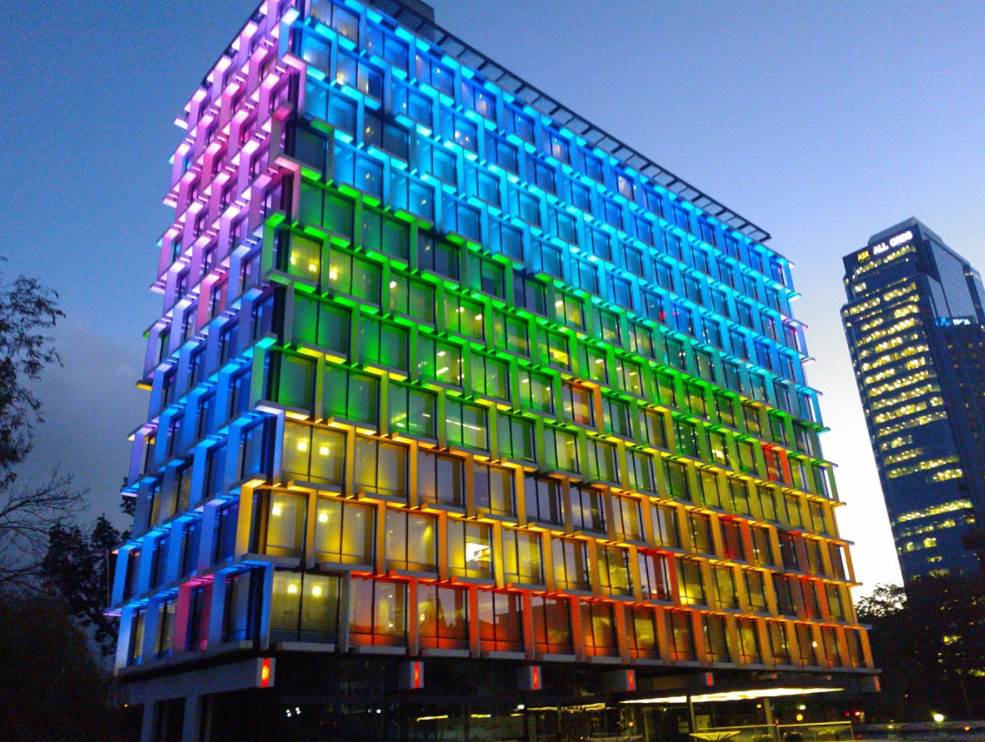
3. Parliament House
The Parliament House in Canberra is often referred to as “The Capital” or “The Parliament” and is the seat of the Government of Australia. It was built between 1981 and 1988 and is located on top of Capital Hill in Australia’s capital city.
It’s another building that was officially opened by Queen Elizabeth II and can be described as one of the most astounding buildings in Australia.
It’s cost a whopping A$1.1 billion to build in the 1980s, the equivalent of nearly A$4.5 billion today. The entire complex has a floor area of 250,000 square meters (2,700,000 square feet).
Because of the elevated position, about 1 million cubic meters (35 million cubic feet) of rock had to be excavated, an enormous endeavor.
Official website: Parliament House
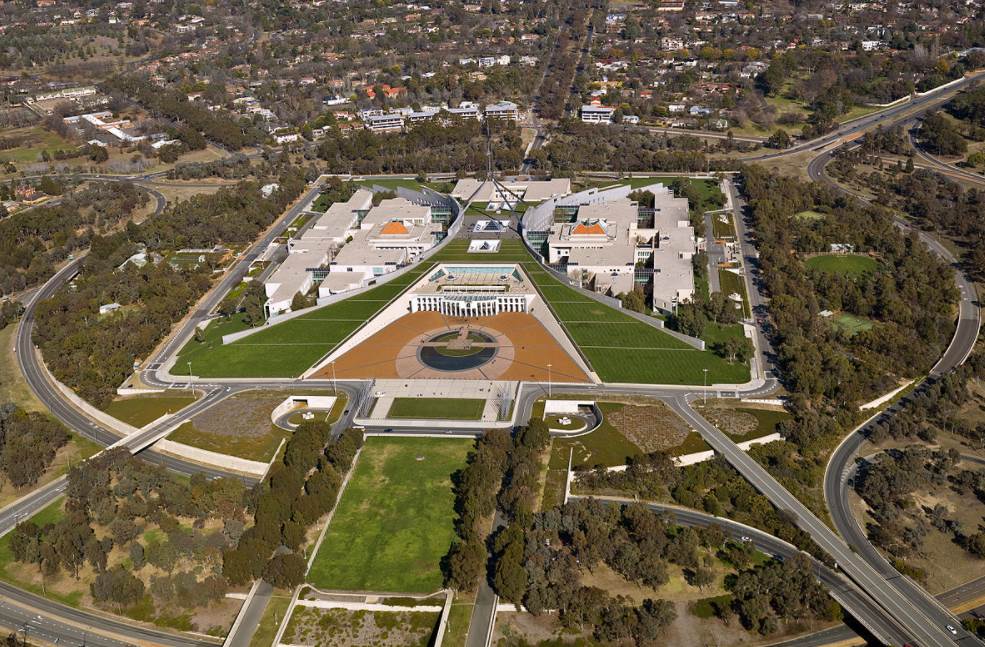
4. Sydney Tower
Australia is the country home to the most skyscrapers in the world compared to inhabitants in the country. This makes it all the more remarkable that the tallest building in the largest city in the country, Sydney, isn’t a skyscraper but an amazing tower.
This fascinating tourist attraction is called the “Sydney Tower” and is easily recognizable due to the distinctive gold-colored pod which features the entertainment facilities and observation deck.
The tallest structure stands 305 meters (1,001 feet) tall and its observation deck referred to as the “Sydney Tower Skywalk” is located at an elevation of 279 meters (915 feet).
This means that a visit to the Sydney Tower allows you to get some of the most amazing views of Sydney imaginable.
This is especially true at night when you can enjoy the view over a relaxing diner at the revolving restaurant on one of the tower’s top floors!
Official website: Sydney Tower Eye
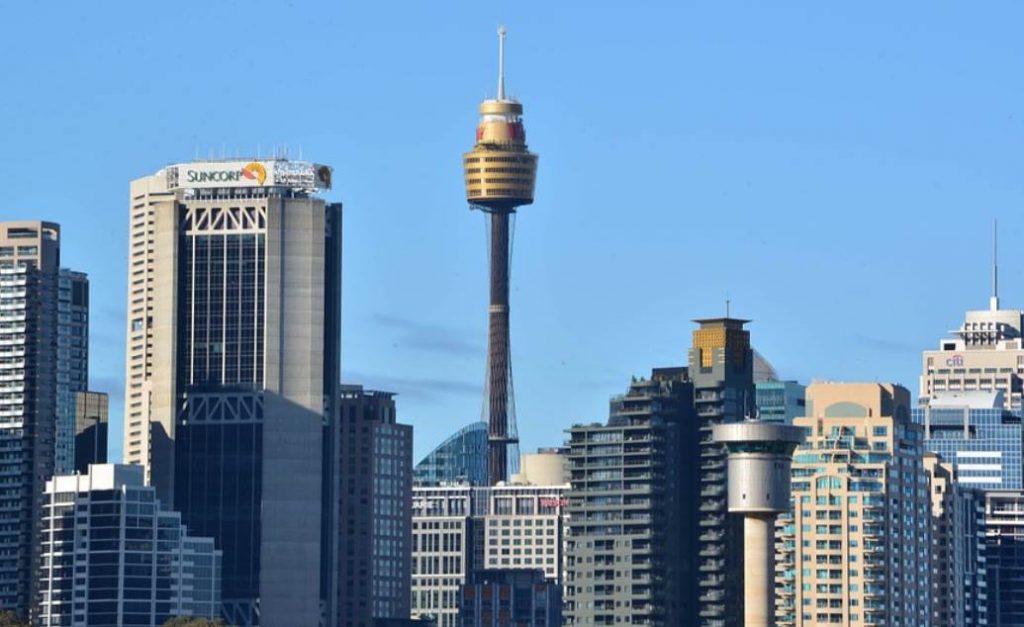
5. Flinders Street Station
Flinders Street Station is a historic train station that is located in the central business district of Melbourne, the second-most populated city in Australia.
The original railway station on this location was referred to as “Melbourne Terminus” and was opened in 1854. This was the first railway station in Australia and only featured one platform that had a length of 30 meters (98 feet).
The current building was built between 1900 and 1909 after the original structure had become too small to accommodate the growing number of passengers.
The building features a variety of architectural styles that can be defined as an Edwardian structure, a form of neo-Baroque that was popular in the early 20th century.
Official website: Flinders Street Station
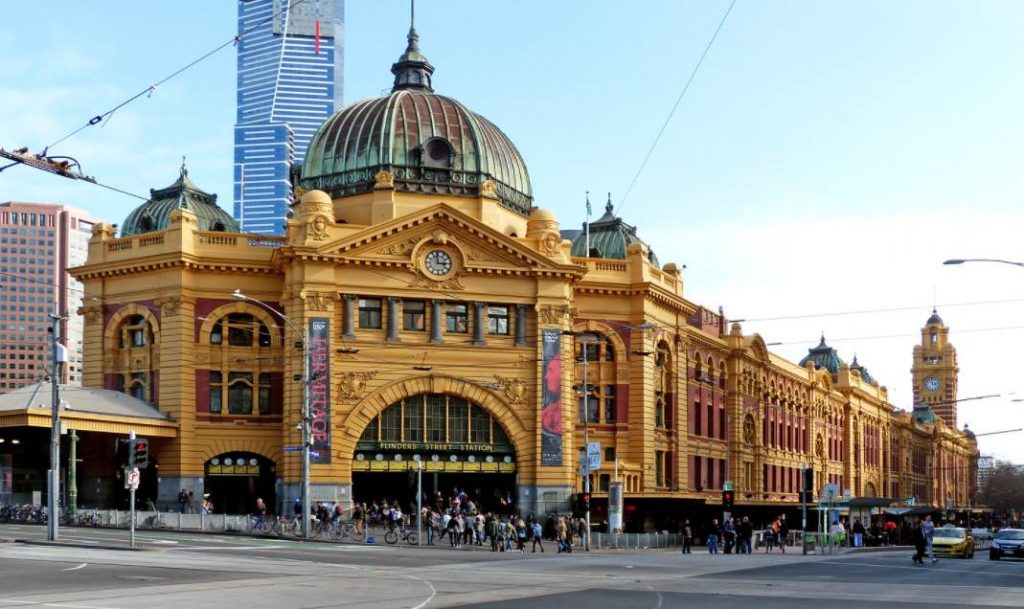
6. Royal Exhibition Building
The Royal Exhibition Building is another incredible structure in Melbourne. It was built between 1879 and 1880 as one of the multiple similar exhibition facilities that were built during the so-called “exhibition movement.”
The area that the structure was built on is called the “Carlton Gardens” and it covers 26 hectares (64 acres). The building itself has a length of 150 meters (490 feet) and was erected for the Melbourne International Exhibition in 1880 and 1881.
It’s one of the few 19th-century exhibitions buildings in the world that have survived and was, therefore, listed as a UNESCO World Heritage site in 2004. It was the first building in Australia to be awarded this status.
It’s another building featuring an eclectic that incorporates elements of the Byzantine, Romanesque, Lombardic, and Italian Renaissance styles.
Official website: Royal Exhibition Building
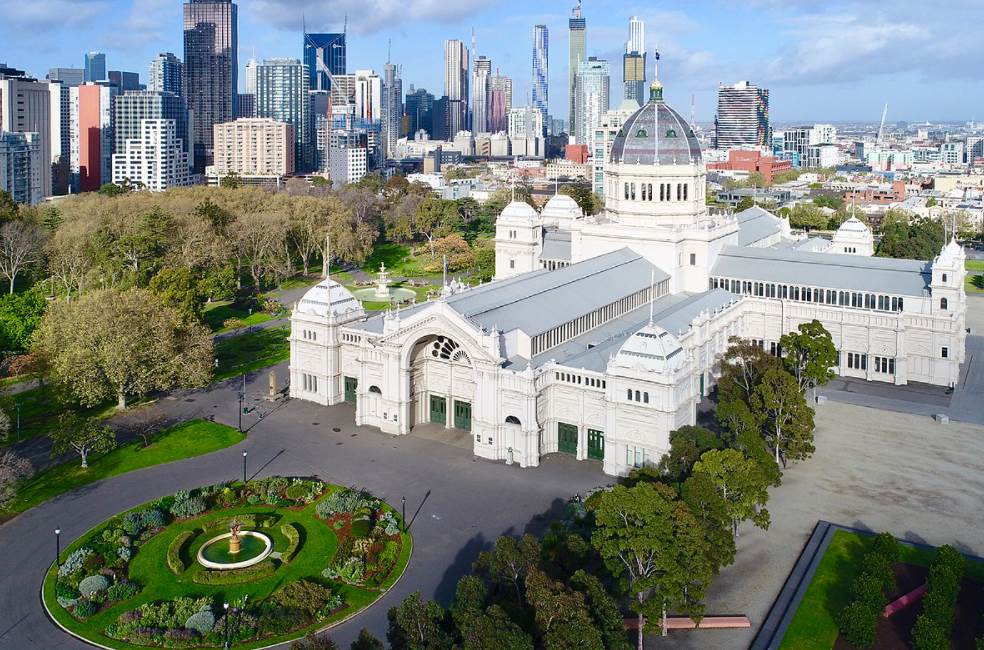
7. Cape Byron Lighthouse
The Cape Byron Lighthouse is also known as the “Cape Byron Light” or “Cape Byron Lightstation.” Cape Byron is the easternmost point of mainland Australia and therefore one of the most important locations in the country.
The amazing lighthouse was built between 1899 and 1901 and is the most powerful lighthouse in Australia today with a tight intensity of 2,200,000 candelas.
Although the structure itself only stands 23 meters (74 feet), it has a focal height of 118 meters (387 feet) due to its elevated position, and a range of 50 kilometers (31 miles).
Official website: Cape Byron Lighthouse

8. Q1 Tower
The Q1 Tower is this short name of the “Queensland Number One Tower” and is located in the coastal city of Gold Coast in Queensland. It’s a supertall skyscraper and the tallest building in Australia with an architectural height of 322.5 meters (1,058 feet).
Equally remarkable is that it’s a residential skyscraper that was the tallest residential building in the world between its completion in 2005 in 2011. It has since dropped many spots and isn’t in the top 10 of this list anymore.
That’s mainly because of the supertall skyscrapers in New York City that have been constructed the past decade. It remains the second-tallest building in the Southern Hemisphere today after the recently completed Autograph Tower in Jakarta which stands 385 meters (1,263 feet) tall.
Official website: Sky Point
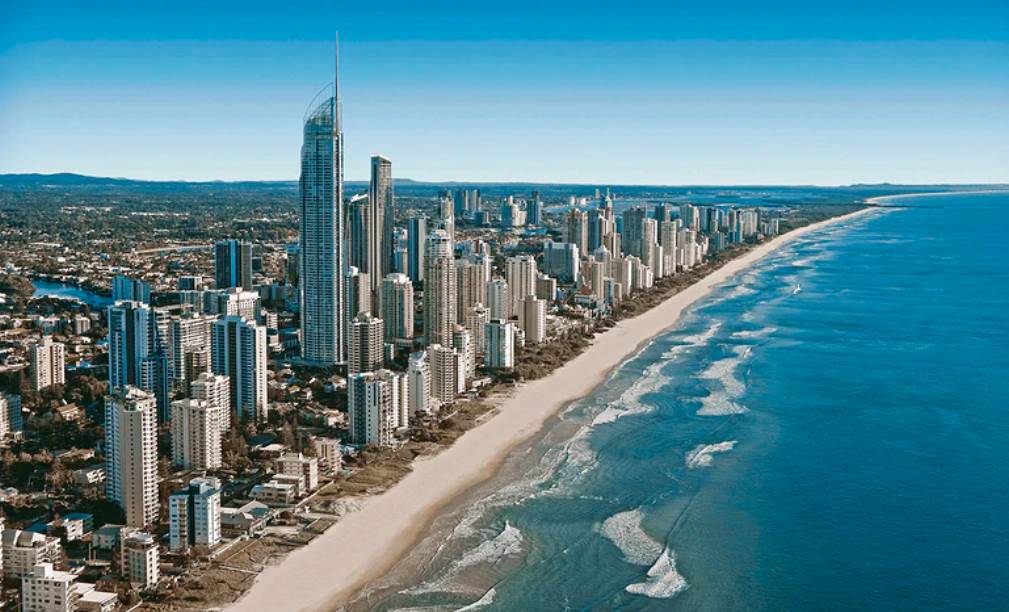
9. Eureka Tower
The Eureka Tower is one of the most fascinating skyscrapers in Melbourne and was completed between 2002 and 2006. It’s located n the Southbank district of the city, one of Melbourne’s inner-city neighborhoods.
The building stands 297.3 meters (975 feet) tall and was the tallest building in Melbourne until “Australia 108” was completed in 2019.
The building was named after the “Eureka Stockade,” an episode during the Victorian gold rush in 1854. The golden tip and red stripe on top of the building are references to this event that were integrated into the tower’s design.
Official website: Melbourne Skydeck
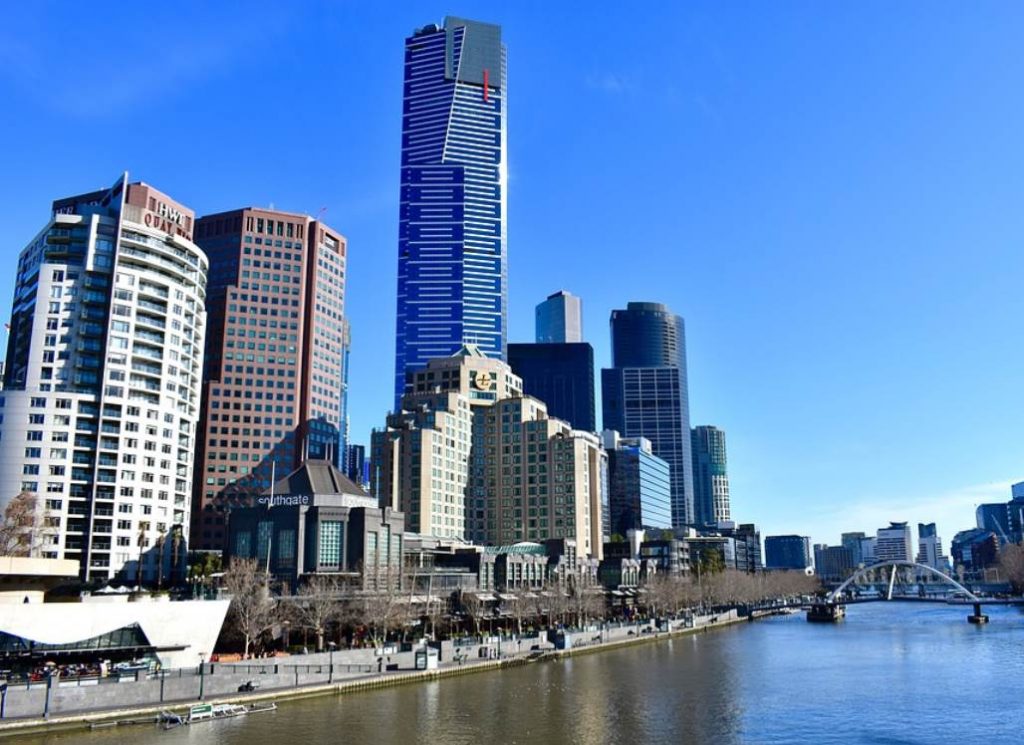
10. Shrine oF Remembrance
The Shrine of Remembrance is a huge War Memorial in Melbourne that was built during the 1930s. This means that it commemorates the men and women who served in World War I.
It’s one of the largest structures of its kind in Australia and was designed to resemble the Tomb of Mausolus, better known as the Mausoleum of Halicarnassus.
This was one of the 7 ancient wonders of the world which is now destroyed and after which mausoleums were named. The other influence of the design was the Parthenon in Athens.
It’s the location where an annual ceremony is held on ANZAC Day (25 April) and Remembrance Day (11 November). At exactly 11 a.m on Remembrance Day, a ray of sunlight shines to illuminate the word “Love” inside the structure.
Official website: Shrine
